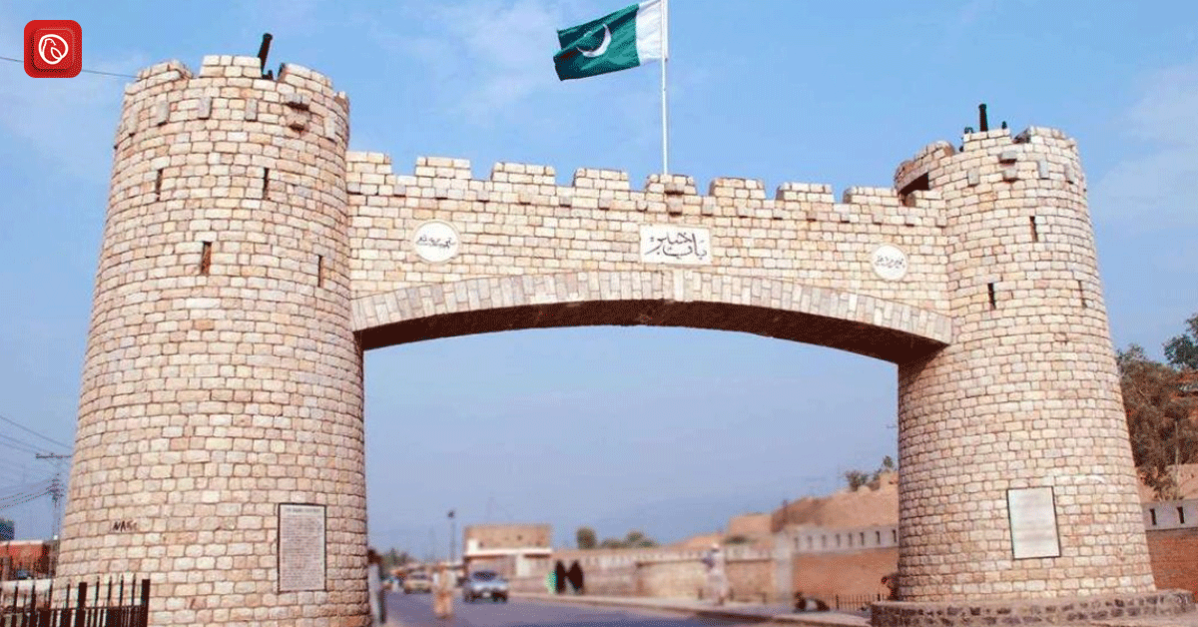In 1964, the Khyber Gate was erected by the military government of Ayub Khan in Peshawar, Pakistan, as a grand entrance to the Indian Subcontinent from the Northwest. This magnificent gate is a remarkable testament to the historical connections between diverse regional cultures, making it a symbol of unity and harmony.
Not only does the Khyber Gate serve as a vital trade route, connecting Eastern and Western cultures, but it also holds a special place in Pakistan’s rich history and heritage. Its intricate design and impressive architecture have captivated the hearts of many Pakistanis and people from around the world.
If you’re eager to discover more about this landmark, Graana.com has gathered information about Bab E Khyber Below:
Bab E Khyber History
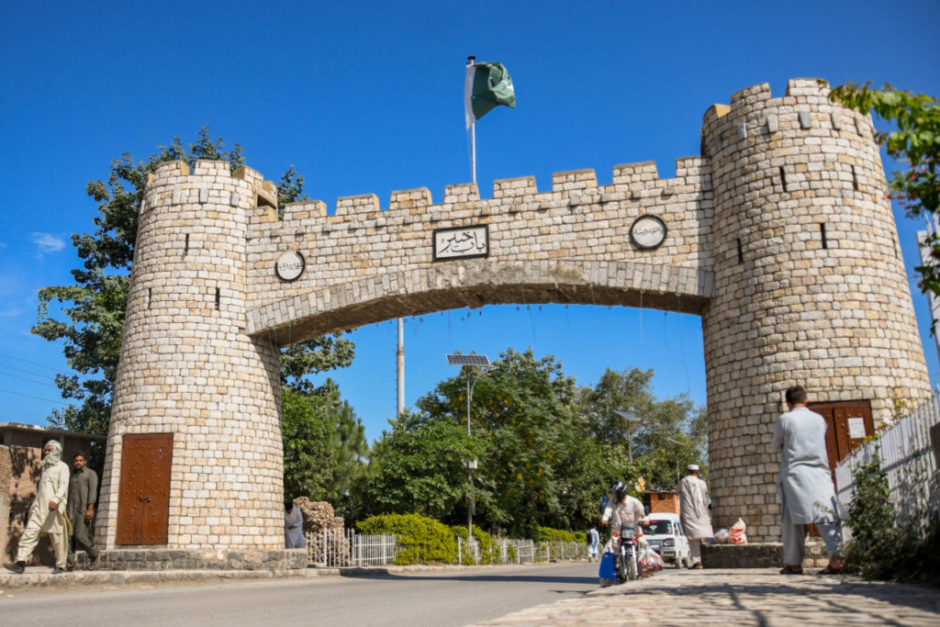
The Bab-e-Khyber is a significant structure that was constructed in 1964 at the entrance of the Khyber Pass in Pakistan. It is situated on the western side of Peshawar and is in close proximity to the old Jamrud Fort. The gate holds great historical and cultural importance and is well-known throughout the region. The Bab-e-Khyber is located in the Khyber Agency and is considered to be a symbol of the rich heritage of the area.
At Jamrud lies the magnificent gate of Khyber, which stands as the point of origin for the ancient Khyber Pass. This pass has been used by numerous traders, wealthy merchants, and even pirates for centuries to travel to South Asia.
The history of Bab e Khyber is deeply intertwined with Alexander the Great’s Macedonian army, who were in awe of the region’s beauty and constructed the gate as a tribute to their conquests. The gate still stands tall and proud in honour of Alexander’s victory and is a testament to the rich cultural heritage of the region.
Significance of Bab E Khyber
The Khyber Pass is a significant entry point that requires special permission to enter. It’s known as the gateway to Peshawar due to its trade route. The Khyber Gate connects various borders, especially with northern and eastern countries, making it a crucial entrance to Peshawar.
Peshawar Pass is widely regarded as the main gateway of Pakistan, holding immense importance in the country’s history. It’s essential for trade and offers a chance to immerse yourself in Pakistan’s past. If you want to explore Pakistan’s history, visiting this place is a great idea.
Architectural Significance
The Khyber Gate represents the passage of time. Built in the early 1960s, it has many historical features. This gate witnessed Pakistan’s independence and the nation’s formation. Historically, it served as a route for various cultures like Greeks, Persians, Mughals, Afghans, and the British to enter the Indian Subcontinent. The Khyber Pass was a crucial point for the British to control the Afghan border.
Historical Gateway
Many historical figures like Alexander the Great’s soldiers, Genghis Khan’s warriors, Mahmood of Ghazna’s troops, and Ahmad Shah Abdali recognised the significance of this pass. The construction of a grey-brown brick wall called Bab-e-Khyber in the early 1960s marked the importance of this passage.
It was officially opened on June 11, 1963, by President Ayub Khan. Over the years, this gate has become a symbol of the Northwestern Frontier Province (NWFP) and its tribal areas.
If you look through the Bab-e-Khyber gate, you’ll see a busy market in the Khyber Agency, which is one of Pakistan’s seven semi-autonomous tribal regions. Vendors are selling their goods, and people are moving around. Some are shopping, while others are just hanging out.
The Khyber Pass itself is located 16 kilometres north of Peshawar, heading towards the Pakistan-Afghanistan border. It starts from the foothills of the Sulaiman Range in Jamrud and goes up to a height of 1,066 metres above sea level.
Nearby Places
Here are some nearby places to Bab Al-Khyber:
Ali Masjid Fort
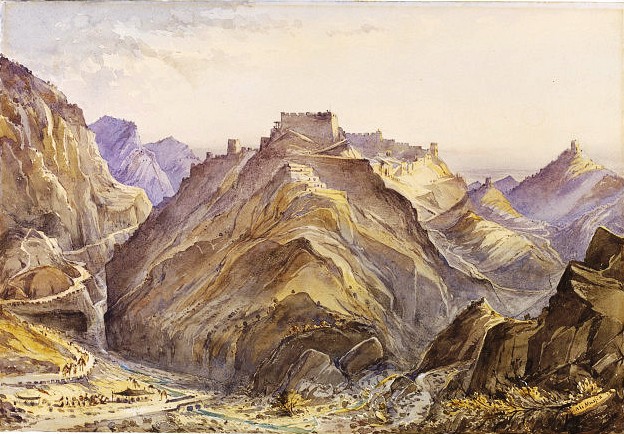
Ali Masjid Fort is located about 15 kilometres from Jamrud, near the narrowest point of the pass. It was built in 1837 by Dost Muhammad Khan. This fort marks the entry point from Afghanistan into India. There is also a shrine dedicated to Caliph Ali nearby.
Bala Hisar Fort
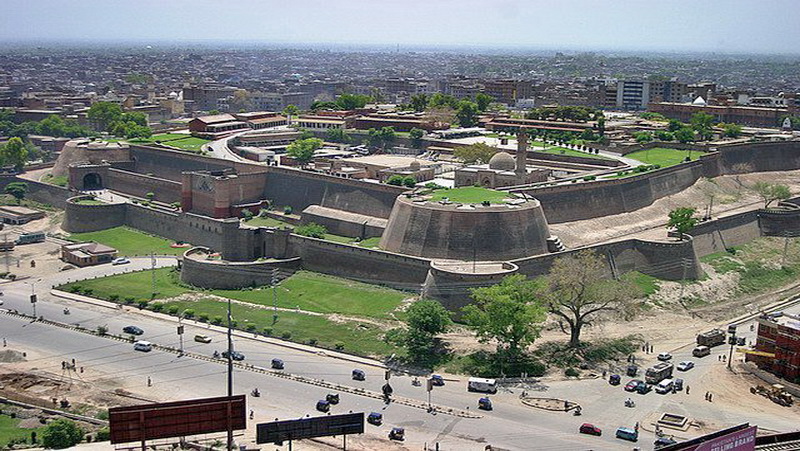
Bala Hisar Fort, constructed in 1526 by Sikhs after capturing the city of Peshawar, is a historical site. It served as a royal residence for Durrani rulers until its destruction after the Battle of Nowshera. Although access is limited, it offers a beautiful view of the whole city and houses a small museum.
Peshawar Museum
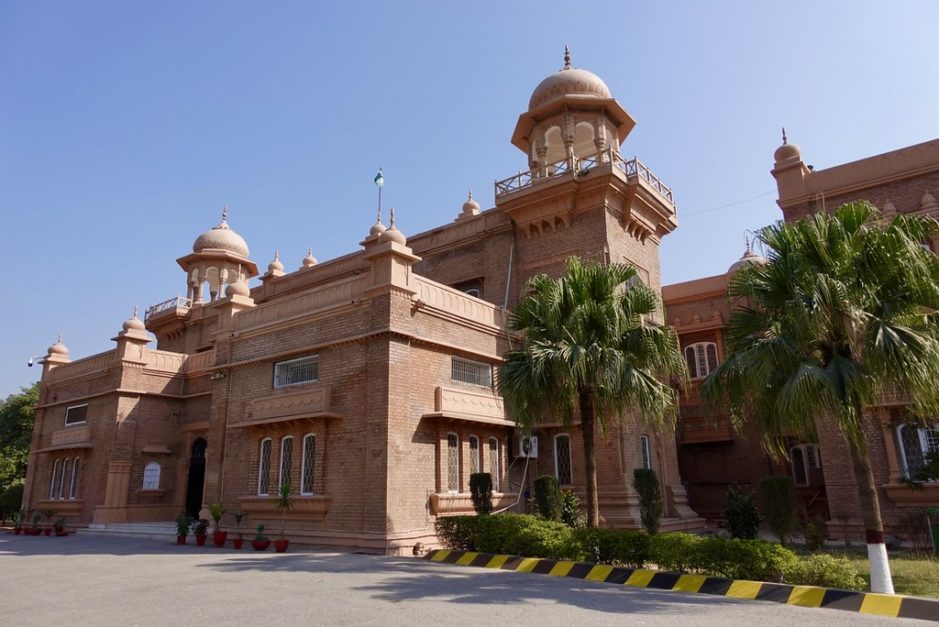
Situated on Saddar Road opposite the house of Governor Peshawar, the Peshawar Museum was established in 1907 in memory of Queen Victoria. It houses a vast collection of historical artefacts, including coins, art, sculptures, ancient books, manuscripts, weapons, dresses, jewellery, and paintings from the Mughal and later periods. The museum provides comprehensive insights into Pakistan’s history.
Masjid Mahabat Khan
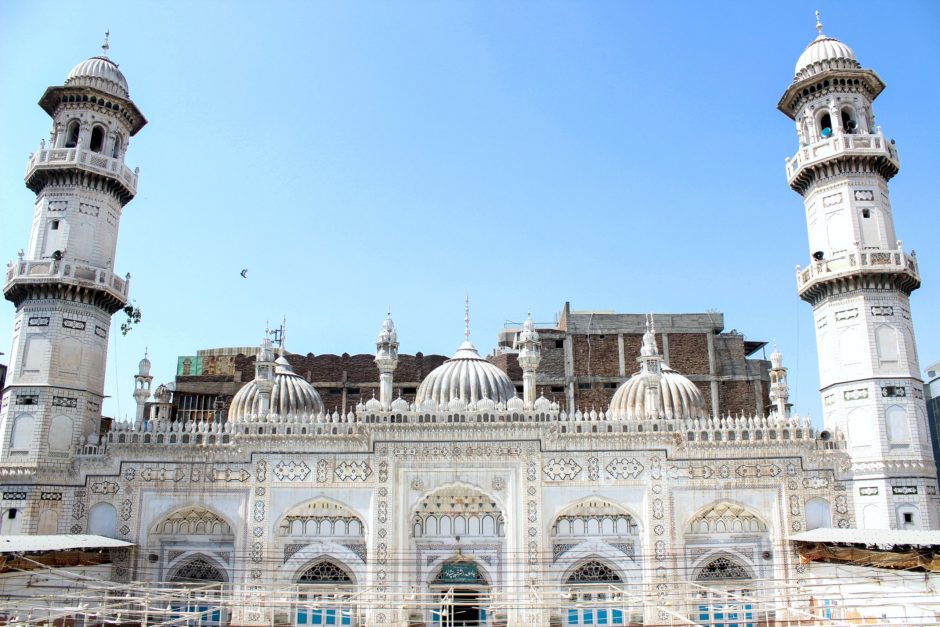
Masjid Mahabat Khan, a Mughal-era mosque built in 1630 under the reign of Emperor Shah Jahan, is a prominent historical site in Peshawar. The mosque was renovated in 1898 and serves as a historic landmark.
Sphola Stupa
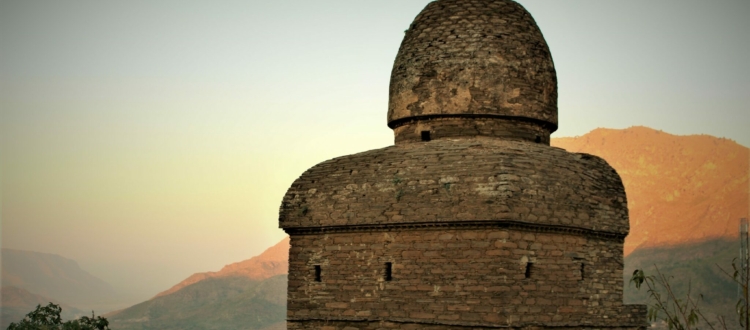
On the road between Ali Masjid and Landikotal, there is a Buddhist stupa known as the Sphola Stupa. It is a significant historical structure built during the Kushan dynasty between the 2nd and 5th centuries AD. The stupa has a unique architecture, with a round dome situated on top of a square base with three levels.
Interestingly, the hill where the stupa stands has small caves, which suggest that it has been excavated many times. In recent years, a new checkpoint has been constructed to protect the stupa from any potential damage.
In the past, local people dug these caves in search of valuable items, and they found a collection of Buddha statues, clay utensils, and coins made of gold and copper. This discovery is a testament to the rich cultural heritage of the region and serves as a reminder of the importance of preserving such historical structures.
Conclusion
In conclusion, Bab-e-Khyber, also known as the Khyber Gate, stands as a magnificent testament to the historical connections between diverse cultures in the Indian Subcontinent. Built in 1964 at the entrance of the Khyber Pass in Peshawar, Pakistan, this grand gateway symbolises unity and harmony among different regional communities.
Visiting Bab-e-Khyber provides a unique opportunity to witness the past come to life, making it a must-visit destination for history enthusiasts and travellers interested in the vibrant tapestry of Pakistan’s history. So, whether you’re captivated by ancient architecture, fascinated by historical trade routes, or simply curious about the diverse cultures of the Subcontinent, Bab-e-Khyber promises an enriching and enlightening experience.
FAQs
Here are some FAQs about Bab-e-Khyber:
1. What is Bab-e-Khyber?
Bab-e-Khyber, also known as the Khyber Gate, is a historic entry point located in Peshawar, Pakistan. It serves as a gateway to the Khyber Pass and has significant historical and cultural importance.
2. What is the historical significance of Bab-e-Khyber?
Bab-e-Khyber has a rich history, serving as a crucial passage for various civilizations, including Greeks, Mughals, Persians, Afghans, and the British. It played a vital role in trade, cultural exchange, and military movements throughout history.
3. Can tourists visit Bab-e-Khyber?
Yes, tourists can visit Bab-e-Khyber. However, special permits might be required for entry, and it is advisable to check with local authorities or tour operators for the latest information on visiting this historical site.
4. What can visitors expect to see at Bab-e-Khyber?
Visitors to Bab-e-Khyber can expect to see a well-preserved gateway with architectural elements reflecting its historical significance. The site offers a glimpse into the past, showcasing the diverse cultures and civilizations that passed through this gateway.
5. Is there any significance of Bab-e-Khyber in modern times?
In modern times, Bab-e-Khyber continues to be an important symbol of cultural heritage and historical pride for the people of Pakistan. It also serves as a reminder of the region’s historical trade routes and strategic importance.
6. Are there any nearby attractions to visit along with Bab-e-Khyber?
Yes, there are several attractions near Bab-e-Khyber, including museums, markets, and historical sites in Peshawar. Tourists can explore the Peshawar Museum, Qissa Khwani Bazaar, and other cultural landmarks in the vicinity.
7. Is there an entry fee to visit Bab-e-Khyber?
The entry fee to visit Bab-e-Khyber may vary, and it is recommended to check with the local authorities or tourism department for the most up-to-date information on entry fees and permits for tourists.
8. Is there a guided tour available at Bab-e-Khyber?
Guided tours might be available at Bab-e-Khyber, offering visitors a more in-depth understanding of its historical significance. Tourists can inquire at the site or local tour operators for guided tour options and schedules.
9. Is photography allowed at Bab-e-Khyber?
Photography policies at Bab-e-Khyber may vary. It’s advisable to ask for permission before taking photographs, especially if you are planning to capture images of the historical structures or artefacts within site.
10. What are the best times to visit?
The best times to visit Bab-e-Khyber are during the cooler months, typically in spring (March to May) and autumn (September to November). During these times, the weather is pleasant, making it more enjoyable for tourists to explore the site.
If you want to know more about the passes of Pakistan, follow the Graana blog.
